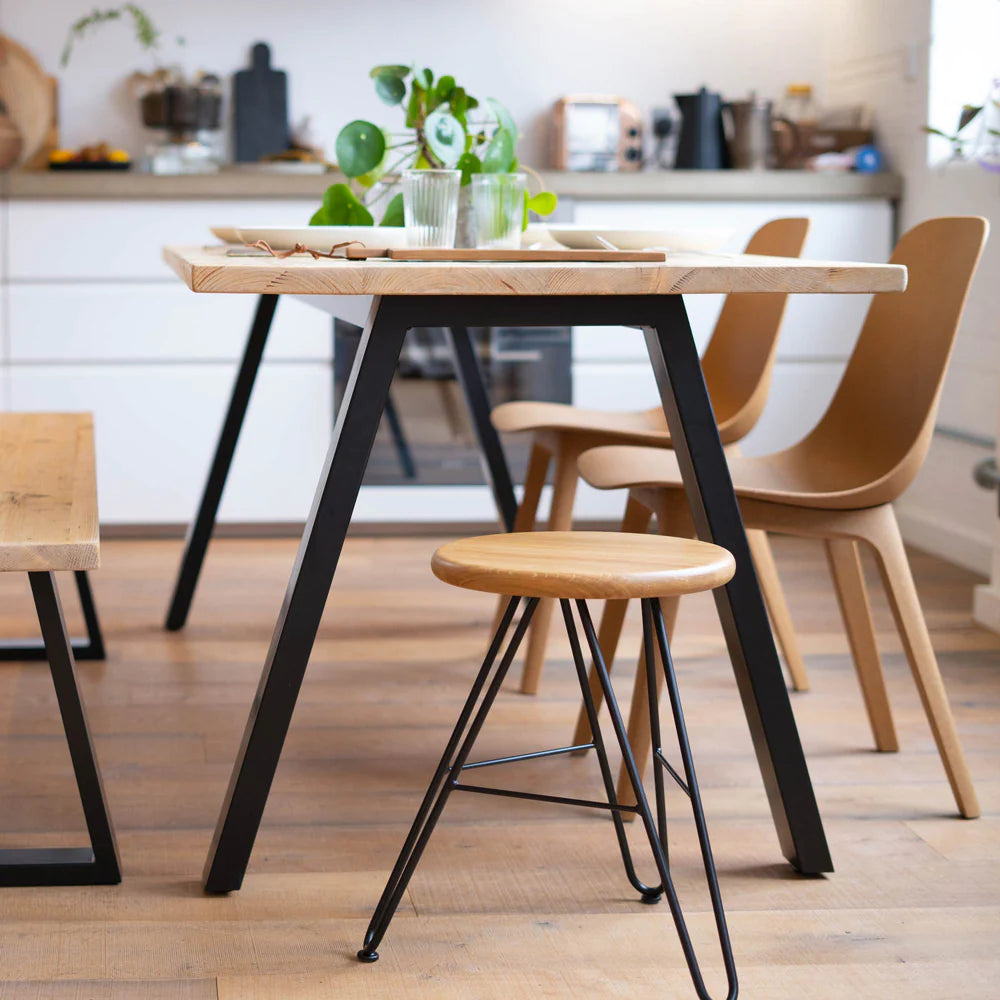Important Considerations for Selecting the Right Table Legs Timber
Selecting the appropriate timber for eating table legs entails a nuanced understanding of various factors that affect both functionality and aesthetic appeal. The selection of timber kind, varying from durable woods to much more delicate softwoods, plays an essential duty in guaranteeing toughness and security. Each of these components can dramatically impact the general experience of your dining area.
Significance of Wood Type

Hardwoods, such as maple, oak, and walnut, are usually favored for their strength and resistance to put on. These sorts of timber provide a robust foundation that can withstand everyday usage, making them perfect for dining tables that experience constant celebrations. In comparison, softer woods like want might be much more vulnerable to damages and scratches, which may not be perfect for high-traffic locations.
Additionally, the choice of timber can likewise influence the ease of upkeep. Some timbers need normal oiling or securing to protect their look, while others may be much more flexible. Inevitably, choosing the ideal timber type involves stabilizing visual factors to consider with useful needs, making certain that the dining table legs not just look enticing yet likewise stand the examination of time.
Assessing Stability and Toughness
When examining eating table legs, one have to consider the stability and strength they supply to the overall structure. The legs are critical in sustaining the table top and making certain the eating experience is safe and enjoyable. A secure table is crucial for avoiding wobbling or tipping, which can bring about spills or mishaps during meals.
The selection of timber type substantially affects strength. Hardwoods such as walnut, oak, and maple are typically extra sturdy and durable than softwoods like pine or fir. Furthermore, the density and design of the legs play an important role; thicker legs or those with a conical design can provide far better assistance and stability.

Visual Considerations
While capability is paramount, the aesthetic appeal of dining table legs can not be neglected, as they considerably affect the general design and ambiance of the eating area. The selection of timber, coating, and style can boost or take away from the table's visual influence.

Finishes also play a vital role in visual appeals. A natural surface can highlight the timber's inherent beauty, while repainted or tarnished legs can present color and individuality right into the area. The percentage and scale of the legs family member to the table top and bordering furniture must be considered to make certain visual equilibrium and communication.
Eventually, the table legs need to not just serve a useful function but likewise add to a natural and inviting atmosphere, making them a vital consideration in the total design of the eating area.
Maintenance Needs
To make sure longevity and maintain the elegance of wood table legs, routine upkeep is essential (Dining Table Legs Wood). Timber is an all-natural material that can be prone to damage from wetness, warmth, and put on. As a result, developing a regular care check over here strategy will substantially boost the durability of your table legs.
Begin with normal cleaning making use of a soft, lint-free towel to eliminate dust and debris that can scrape the surface. For even more thorough cleansing, use a moderate soap remedy and damp fabric, preventing excess dampness that can seep into the timber. It is recommended to use a high-quality timber polish or conditioner every couple of months to nurture the wood and maintain its luster.
Deal with any type of home damages or scrapes promptly with suitable timber filler or touch-up pens to stop further wear and tear. By sticking to these upkeep needs, you will not only preserve the visual charm of your wooden dining table legs yet also expand their useful lifespan.
Budget and Cost Factors
Budget and price aspects regularly play a critical role in the decision-making process for choosing wood table legs. When reviewing options, it is vital to develop a clear budget that aligns with your overall furniture investment. The expense of wooden dining table legs can vary substantially based on the kind of layout, workmanship, and wood complexity.
Hardwoods such as walnut, cherry, and oak normally regulate higher prices due to their resilience and visual charm. On the other hand, softer woods like ache may be much more cost effective but could not provide the exact same longevity. Furthermore, personalized or artisan-crafted legs can sustain extra expenses, showing the ability and time purchased their development.
It is likewise important to take into consideration the possible long-term value of your financial investment. While deciding for lower-cost materials could appear economically prudent originally, they may need more constant substitute or repairs, inevitably enhancing total expenditure.
Consequently, stabilizing top check that quality and price is crucial. Prioritize materials that meet your visual preferences while ensuring they fit easily within your budget plan, permitting you to produce an eating location that is both functional and aesthetically appealing.
Conclusion
In final thought, picking the appropriate wood for dining table legs requires mindful consideration of various factors, including timber kind, stability, looks, maintenance, and budget plan. Eventually, an educated choice will enhance the durability and visual allure of the dining table, ensuring contentment and capability for years to come.
Choosing the right type of wood for dining table legs is vital for both aesthetic allure and structural stability. Inevitably, picking the appropriate wood type involves balancing aesthetic factors to consider with sensible requirements, guaranteeing that the eating table legs not only look enticing yet additionally stand the test of time.
It is recommended to apply a high-quality timber polish or conditioner every couple of months to nurture the timber and maintain its radiance.
The cost of wood eating table legs can vary dramatically based on the kind of layout, workmanship, and wood complexity.
In verdict, picking the appropriate timber for eating table legs necessitates cautious consideration of various variables, including wood kind, stability, aesthetics, upkeep, and budget plan.